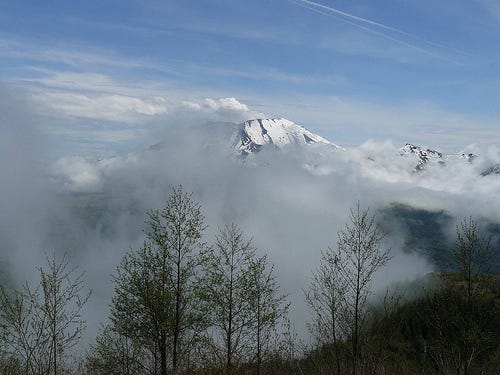I was looking up some hat details tonight - working on a story that has smacked me in the face. At least the first scene and .... so I wanted a place to store it, great place right here.
But this is good to know.
If you're in the market for a hat, you need to make sure you get the right one! No matter what kind of event you're getting ready for, using the right terminology will ensure that you wind up with a hat that meets your expectations.
Here are some of the most commonly-used words in the hat industry:
Beret -- a hat made out of felt or cloth with a wide, flat, round crown.
Bucket hat -- a casual cloth hat with a wide, downward-sloped brim that looks similar to an upside down bucket. These hats are worn by both men and women, and they're most commonly seen on the beach. For colder weather, you can get a bucket hat made out of wool or fur.
Cap -- a hat with a small brim in the front. While the terms "cap" and "hat" are often used interchangeably, they are not the same thing. A "cap" only refers to a small-brimmed hat -- like a baseball cap, for example -- while the term "hat" can be used to describe a variety of different styles.
Cashmere -- a type of wool that's incredibly soft and fine. This wool comes specifically from the Kashmir goat, hence the name.
Church hat -- a fancy women's hat worn for Sunday worship. Church hats are most common among African-American women. These hats come with bold adornments, like bows, ribbon, sequins, or flowers.
Cocktail hat -- a small hat for women that's usually worn on the front part of the head. Typically, these hats come with a variety of adornments -- such as feathers, beads, jewels, flowers, or even a veil. These hats are often seen at cocktail parties, which is where the name comes from. However, they don't have to be worn at night. These hats are also popular during daytime activities, like horse races. The terms "cocktail hat" and "fascinator" are often used interchangeably.
Cowboy hat -- a hat with a wide brim and a tall crown that's typically made of felt or leather. Originally, these hats were worn by cow hands, which is where the name comes from.
Crown -- the topmost part of a hat. Low crown hats have less volume, so they're better for people who don't have very thick hair on top of their head.
Fascinator -- also known as a "cocktail hat", these headpieces were originally made out of lightweight knit. Today, the fascinator is considered to be a miniature women's hat that attaches to the top of the head with a band, comb, or clip. Fascinators are generally accepted at any event where hats are accepted, particularly at horse racing events like the Kentucky Derby.
Fur -- material made from the soft underfur of a beaver, rabbit, or similar animal. Fur hats have an amazing ability to retain heat and block wind, making them the perfect choice for cold, blustery weather. Underfur is also naturally water-resistant, so your fur hat won't be ruined by a passing rain shower.
Leather -- material made from the skin of an animal. Before it can be manufactured, the skin must be tanned, meaning that it has special preservatives applied to it that prevent decay, make it more pliable, and make it more supple. That way, it's more durable and easier to shape.
Newsboy cap -- a casual round cap with a brim that's also referred to as a "flat cap". Worn by both men and women, newsboy caps can be made out of cloth, wool, leather, and tweed.
Panama hat -- a wide-brimmed hat worn by both men and women. These hats are made out of straw that comes from the Jipijapa, a palm tree that's common in Central and South America. Despite the name, these hats originated in Ecuador, not Panama.
Silk -- a fine, soft, strong fiber that's made by silkworms in cocoons. The fibers are collected and made into thread and fabric. Silk is unique because it's a good material for both hot and cold temperatures. It has naturally-strong absorbent qualities that help keep your head cool in the summertime, but it also has a low conductivity level, so it will prevent too much heat from escaping your head in the wintertime.
Sinamay straw -- Made from banana plants grown in the Philippines, the fibers are woven together to make a stiff, coarse fabric.
Sisal straw -- fiber that is made from the sisal plant. This plant is a type of Mexican agave that's widely grown for its big sword-shaped leaves that contain stiff fibers.
Sun hat -- a wide-brimmed hat that typically has a high crown. Because it is so wide, it protects the face, neck, and portions of the shoulders from direct exposure to the sun. The best sun hats are made out of material that's thick enough to prevent any UV rays from penetrating. Woven and mesh hats have tiny gaps in them that can let dangerous UV rays pass through.
Top hat -- a men's silk hat that's shaped like a tall cylinder with a narrow brim and a flat crown. While the top hat was much more popular in the 18th and early 19th centuries, it is still seen at formal occasions today.
Wool -- the fine, soft, curly or wavy hair of a sheep, goat, or similar animal. Because the hair has a natural crimp to it, it's easier for the individual fibers to stick together -- generating a thicker, bulkier fabric that's strong enough to retain heat and block wind. Wool is also highly water-resistant and moisture-wicking, meaning that it can draw sweat away from the skin.






